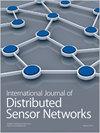Second-degree branch structure blockchain expansion model
IF 2.5
4区 计算机科学
Q3 COMPUTER SCIENCE, INFORMATION SYSTEMS
International Journal of Distributed Sensor Networks
Pub Date : 2022-03-01
DOI:10.1177/15501477211064755
引用次数: 1
Abstract
The blockchain runs in a complex topological network which is affected by the principle of consensus, and data storage between nodes needs to maintain global consistency in the entire network, which causes the data storage inefficient. At the same time, the information exchange between large-scale communication node groups leads to the problems of bandwidth expropriation and excessive network load. In response to these problems, this article proposes a second-degree branch structure blockchain expansion model. First, a ternary storage structure is established. Data use the way of fully integrated storage, multi-cell storage, and fully split storage, and data are classified and stored in parallel between the structures. Second, a second-degree branch chain model is constructed. The main chain forks into multiple sub-chains, and a free competition chain structure and a Z-type chain structure are defined; a two-way rotation mechanism is introduced to realize the integration and transition between chain structures. Finally, a set of malicious attacks is simulated to realize the security constraints of the blockchain, to verify the security of the second-degree branch chain model. Experiment shows that the second-degree branch structure expansion model proposed in this article has great advantages in data storage efficiency and network load.二度分支结构区块链展开模型
区块链运行在一个受共识原则影响的复杂拓扑网络中,节点之间的数据存储需要在整个网络中保持全局一致性,这导致数据存储效率低下。同时,大规模通信节点群之间的信息交换导致了带宽占用和网络负载过大的问题。针对这些问题,本文提出了二级分支结构的区块链扩展模型。首先,建立了三元存储结构。数据采用完全集成存储、多单元存储和完全拆分存储的方式,数据在结构之间并行分类存储。其次,建立了二阶分支链模型。主链分叉为多个子链,定义了自由竞争链结构和Z型链结构;介绍了一种双向旋转机构,实现了链结构之间的集成和过渡。最后,模拟了一组恶意攻击,实现了区块链的安全约束,验证了二级分支链模型的安全性。实验表明,本文提出的二阶分支结构扩展模型在数据存储效率和网络负载方面具有很大的优势。
本文章由计算机程序翻译,如有差异,请以英文原文为准。
求助全文
约1分钟内获得全文
求助全文
来源期刊
CiteScore
6.50
自引率
4.30%
发文量
94
审稿时长
3.6 months
期刊介绍:
International Journal of Distributed Sensor Networks (IJDSN) is a JCR ranked, peer-reviewed, open access journal that focuses on applied research and applications of sensor networks. The goal of this journal is to provide a forum for the publication of important research contributions in developing high performance computing solutions to problems arising from the complexities of these sensor network systems. Articles highlight advances in uses of sensor network systems for solving computational tasks in manufacturing, engineering and environmental systems.

 求助内容:
求助内容: 应助结果提醒方式:
应助结果提醒方式:


